View in other NatureServe Network Field Guides
NatureServe
Montana
Utah
Wyoming
Idaho
Wisconsin
British Columbia
South Carolina
Yukon
California
New York
Mat Milkvetch - Astragalus kentrophyta var. tegetarius
Other Names:
Astragalus kentrophyta var. implexus, Astragalus kentrophyta ssp. implexus, Astragalus tegetarius
General Description
PLANTS: A mat-forming perennial plant that grows from an intricately branched caudex. Hairs on plant are strigillose (stiff, straight, sharp, and appressed) to villous (long, soft, crooked, and not tangled). Stems prostrate with upper ends ascending 1–3 cm. Source: Lesica et al. 2012.
LEAVES: Leaves alternately arranged on the stem and pinnately divided into 3 to 7 leaflets. Leaflets are narrowly lanceolate in shape, 3–9 mm long, and with mucronate tips. Terminal leaflet is confluent with the rachis of the leaf. Stipules are 2–5 mm long, sessile (basally connate). Source: Lesica et al. 2012.
INFLORESCENCE: Raceme of 1 to 3 flowers growing in the axils of a leaf and shorter than the leaves. Papilionaceous flowers: Petals are white to purple; Banner is reflexed, 4–8 mm long; and Keel is 3–7 mm long. Sepals are green with white and/or black strigillose hairs, 1-3 mm long. Legume is ovoid, compressed, strigose, and 3–5 mm long. Source: Lesica et al. 2012.
VARIETY tegetarius: Hair Type is only basifixed. Flowers are at least 5 mm long. Petals are mostly purple. Source: Lesica et al. 2012.
Astragalus is derived from the Greek word for ankle bone, astragalos which may refer to the shape of the leaves or fruits (legumes) (Giblin et al. [eds.] 2018).
Diagnostic Characteristics
Astragalus kentrophyta has two varieties in Montana:
Variety tegetarius*Hair Type: Only the basifixed (hair attached at one end to the epidermis) type is present on the plant.
*Flowers: Mostly purple and at least 5 mm long.
*Habitat: Fellfields, moraine, and scree near or above treeline.
Variety kentrophyta *Hair Types: Both basifixed (hair attached at one end to the epidermis) and dolabriform (hair attached near its middle to the epidermis; like a seesaw) types are present on the plant.
*Flowers: Mostly white and 4-5mm long.
*Habitat: Sandy or gravelly soil, often around ponds in the plains.
Species Range
Montana Range
Range Descriptions
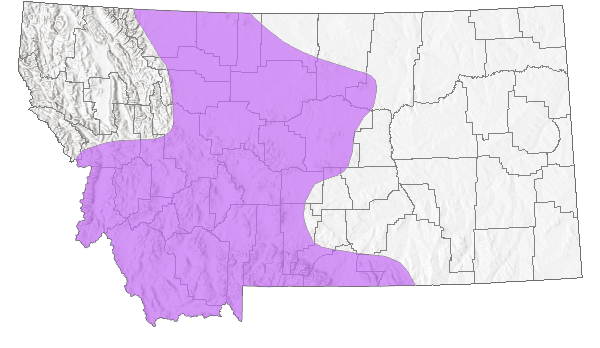
 Native
Native
Range Comments
Astragalus kentrophyta if found in Alberta and Saskatchewan, Canada south to California, Arizona, New Mexico, and Nebraska, United States (Lesica et al. 2012). Variety tegetarius has been found mostly in southwest, south-central, central, and north-central Montana.
NOTE: The Montana maps below only reflect observations reported at the variety-level for tegetarius.
Observations in Montana Natural Heritage Program Database
Number of Observations: 77
(Click on the following maps and charts to see full sized version)
Map Help and Descriptions
Relative Density
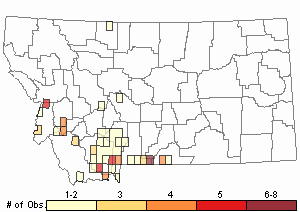
Recency
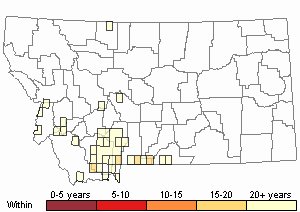
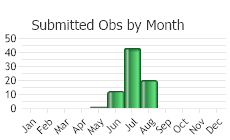
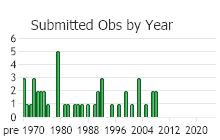
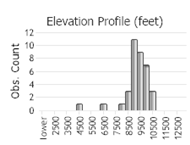 (Observations spanning multiple months or years are excluded from time charts)
(Observations spanning multiple months or years are excluded from time charts)
Habitat
Fellfields, moraine, and scree near or above treeline in Montana (Lesica et al. 2012).
In eastern Glacier County, varieties kentrophyta and tegetariushave been found co-occurring in mixed grass prairie with Bouteloua gracilis, Festuca idahoensis, and Elymus smithii where soils are gravelly, silty, and well-drained (Tara Luna personal communication). Habitat was observed as being of good to excellent quality.
Ecology
POLLINATORS The following animal species have been reported as pollinators of this plant species or its genus where their geographic ranges overlap:
Bombus vagans,
Bombus appositus,
Bombus auricomus,
Bombus bifarius,
Bombus borealis,
Bombus centralis,
Bombus fervidus,
Bombus flavifrons,
Bombus huntii,
Bombus mixtus,
Bombus nevadensis,
Bombus rufocinctus,
Bombus ternarius,
Bombus terricola,
Bombus occidentalis,
Bombus pensylvanicus,
Bombus griseocollis, and
Bombus insularis (Macior 1974, Thorp et al. 1983, Mayer et al. 2000, Colla and Dumesh 2010, Wilson et al. 2010, Koch et al. 2012, Miller-Struttmann and Galen 2014, Williams et al. 2014).
Reproductive Characteristics
Plants reproduce by seed. Seeds have the potential for long term viability in natural seedbanks (Tara Luna personal communication). In eastern Glacier County it has been observed that plants do not flower and reproduce during drought conditions (Tara Luna personal communication).
PAPILIONACEOUS FLOWER
*Species belonging to the Pea Subfamily (Papilionoideae) have papilionaceous flowers (Elpel 1998). This applies to almost all species in the northern latitudes (Elpel 1998).
*It refers to the petals of the flowers appearing like a butterfly.
*The 5 petals (collectively called the corolla) have a bilateral symmetry: large upper petal (banner), two lateral petals (wings), and usually two fused lower petals (keeled). The keel petals resembling a boat.
Management
GRAZING
In north-central Montana livestock have been observed to avoid plants.
Stewardship Responsibility
References
- Literature Cited AboveLegend:
 View Online Publication
View Online Publication Colla, S.R. and S. Dumesh. 2010. The bumble bees of southern Ontario: notes on natural history and distribution. Journal of the Entomological Society of Ontario 141:39-68.
Colla, S.R. and S. Dumesh. 2010. The bumble bees of southern Ontario: notes on natural history and distribution. Journal of the Entomological Society of Ontario 141:39-68. Elpel, Thomas. 2000. Botany In A Day, Elpel's Herbal Field Guide to Plant Families. 4th Edition, January. Hollowtop Outdoor Primitive School Press, Pony, Montana.
Elpel, Thomas. 2000. Botany In A Day, Elpel's Herbal Field Guide to Plant Families. 4th Edition, January. Hollowtop Outdoor Primitive School Press, Pony, Montana. Hitchcock, C.L. and A. Cronquist. 2018. Flora of the Pacific Northwest: An Illustrated Manual. Second Edition. Giblin, D.E., B.S. Legler, P.F. Zika, and R.G. Olmstead (eds). Seattle, WA: University of Washington Press in Association with Burke Museum of Natural History and Culture. 882 p.
Hitchcock, C.L. and A. Cronquist. 2018. Flora of the Pacific Northwest: An Illustrated Manual. Second Edition. Giblin, D.E., B.S. Legler, P.F. Zika, and R.G. Olmstead (eds). Seattle, WA: University of Washington Press in Association with Burke Museum of Natural History and Culture. 882 p. Koch, J., J. Strange, and P. Williams. 2012. Bumble bees of the western United States. Washington, DC: USDA Forest Service, Pollinator Partnership. 143 p.
Koch, J., J. Strange, and P. Williams. 2012. Bumble bees of the western United States. Washington, DC: USDA Forest Service, Pollinator Partnership. 143 p. Lesica, P., M.T. Lavin, and P.F. Stickney. 2012. Manual of Montana Vascular Plants. Fort Worth, TX: BRIT Press. viii + 771 p.
Lesica, P., M.T. Lavin, and P.F. Stickney. 2012. Manual of Montana Vascular Plants. Fort Worth, TX: BRIT Press. viii + 771 p. Macior, L.M. 1974. Pollination ecology of the Front Range of the Colorado Rocky Mountains. Melanderia 15: 1-59.
Macior, L.M. 1974. Pollination ecology of the Front Range of the Colorado Rocky Mountains. Melanderia 15: 1-59. Mayer, D.F., E.R. Miliczky, B.F. Finnigan, and C.A. Johnson. 2000. The bee fauna (Hymenoptera: Apoidea) of southeastern Washington. Journal of the Entomological Society of British Columbia 97: 25-31.
Mayer, D.F., E.R. Miliczky, B.F. Finnigan, and C.A. Johnson. 2000. The bee fauna (Hymenoptera: Apoidea) of southeastern Washington. Journal of the Entomological Society of British Columbia 97: 25-31. Miller-Struttmann, N.E. and C. Galen. 2014. High-altitude multi-taskers: bumble bee food plant use broadens along an altitudinal productivity gradient. Oecologia 176:1033-1045.
Miller-Struttmann, N.E. and C. Galen. 2014. High-altitude multi-taskers: bumble bee food plant use broadens along an altitudinal productivity gradient. Oecologia 176:1033-1045. Thorp, R.W., D.S. Horning, and L.L. Dunning. 1983. Bumble bees and cuckoo bumble bees of California (Hymenoptera: Apidae). Bulletin of the California Insect Survey 23:1-79.
Thorp, R.W., D.S. Horning, and L.L. Dunning. 1983. Bumble bees and cuckoo bumble bees of California (Hymenoptera: Apidae). Bulletin of the California Insect Survey 23:1-79. Williams, P., R. Thorp, L. Richardson, and S. Colla. 2014. Bumble Bees of North America. Princeton, NJ: Princeton University Press. 208 p.
Williams, P., R. Thorp, L. Richardson, and S. Colla. 2014. Bumble Bees of North America. Princeton, NJ: Princeton University Press. 208 p. Wilson, J.S., L.E. Wilson, L.D. Loftis, and T. Griswold. 2010. The montane bee fauna of north central Washington, USA, with floral associations. Western North American Naturalist 70(2): 198-207.
Wilson, J.S., L.E. Wilson, L.D. Loftis, and T. Griswold. 2010. The montane bee fauna of north central Washington, USA, with floral associations. Western North American Naturalist 70(2): 198-207.
- Additional ReferencesLegend:
 View Online Publication
View Online Publication
Do you know of a citation we're missing? Aho, Ken Andrew. 2006. Alpine and Cliff Ecosystems in the North-Central Rocky Mountains. Ph.D. Dissertation. Bozeman, Montana: Montana State University. 343 p.
Aho, Ken Andrew. 2006. Alpine and Cliff Ecosystems in the North-Central Rocky Mountains. Ph.D. Dissertation. Bozeman, Montana: Montana State University. 343 p. Culver, D.R. 1994. Floristic analysis of the Centennial Region, Montana. M.Sc. Thesis. Montana State University, Bozeman. 199 pp.
Culver, D.R. 1994. Floristic analysis of the Centennial Region, Montana. M.Sc. Thesis. Montana State University, Bozeman. 199 pp. Lesica, P., M.T. Lavin, and P.F. Stickney. 2022. Manual of Montana Vascular Plants, Second Edition. Fort Worth, TX: BRIT Press. viii + 779 p.
Lesica, P., M.T. Lavin, and P.F. Stickney. 2022. Manual of Montana Vascular Plants, Second Edition. Fort Worth, TX: BRIT Press. viii + 779 p.
- Web Search Engines for Articles on "Mat Milkvetch"





